 Forest
Drive
Forest
Drive  Forest
Drive
Forest
Drive Richard Bell's nature diary, Northumbria, Wednesday 22 September 2010
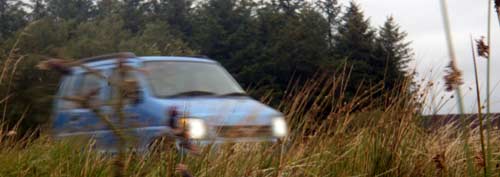
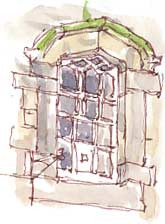
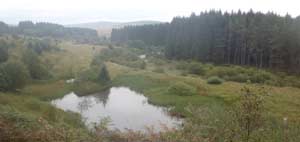 THE
FOREST DRIVE
from Kielder
Castle to
Blakehopeburnhaugh
on the A68
runs through
some of
the most
remote moorland
and forest
in England.
We had views
of a pair
of crossbills
and of a
buzzard
which looked
over its
shoulder,
watching
us from
the top
of pine
perhaps
10 yards
from the
road. Our
car acted
as a hide;
I'm sure
that it
would have
flown off
straight
away if
we'd stepped
out of the
car.
THE
FOREST DRIVE
from Kielder
Castle to
Blakehopeburnhaugh
on the A68
runs through
some of
the most
remote moorland
and forest
in England.
We had views
of a pair
of crossbills
and of a
buzzard
which looked
over its
shoulder,
watching
us from
the top
of pine
perhaps
10 yards
from the
road. Our
car acted
as a hide;
I'm sure
that it
would have
flown off
straight
away if
we'd stepped
out of the
car.
With its rough, gravelly surface most of the way, the Forest Drive wasn't designed with our little Wagon R (above) in mind but, to give the impression that I zooming along like a rally driver, I've to added motion blur and blazing headlights to the photograph using filters in Photoshop .
 Before
we set out
on the drive
we visited
Kielder
Castle (right),
built in
1775 as
a hunting
lodge for
the Duke
of Northumberland.
We also
visited
the Kielder
Salmon Centre
where in
the interactive
quiz we
got the
correct
answer to
all the
questions
except one,
which was
how many
salmon are
bred at
the Centre
each year;
the answer
is 900,000
and they
also breed
freshwater
pearl mussels
and Ennnerdale
charr, a
rare Lakeland
species
of fish
which is
currently
in decline
in it's
natural
habitat.
Before
we set out
on the drive
we visited
Kielder
Castle (right),
built in
1775 as
a hunting
lodge for
the Duke
of Northumberland.
We also
visited
the Kielder
Salmon Centre
where in
the interactive
quiz we
got the
correct
answer to
all the
questions
except one,
which was
how many
salmon are
bred at
the Centre
each year;
the answer
is 900,000
and they
also breed
freshwater
pearl mussels
and Ennnerdale
charr, a
rare Lakeland
species
of fish
which is
currently
in decline
in it's
natural
habitat.
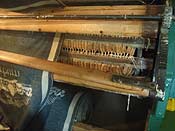
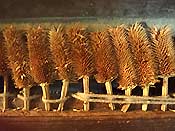 Otterburn
Mill
Otterburn
MillTeasel gets its name because it was used to 'tease' the nap on woven cloth. This teasel head (left) is the cultivar that was grown for the purpose. Compared with the wild teasel that we grow in our garden it's more cylindrical and the not as spiky as the spines are curved at the tips. I drew it in the weavers restaurant at Otterburn Mill, seven miles down the A68 from the end of the Forest Drive, where they still have various textile machine used in woollen blanket weaving including this one that includes rows of teasels fastened into frames.
Links: Otterburn Mill , Forest Drive , Kielder Salmon Centre